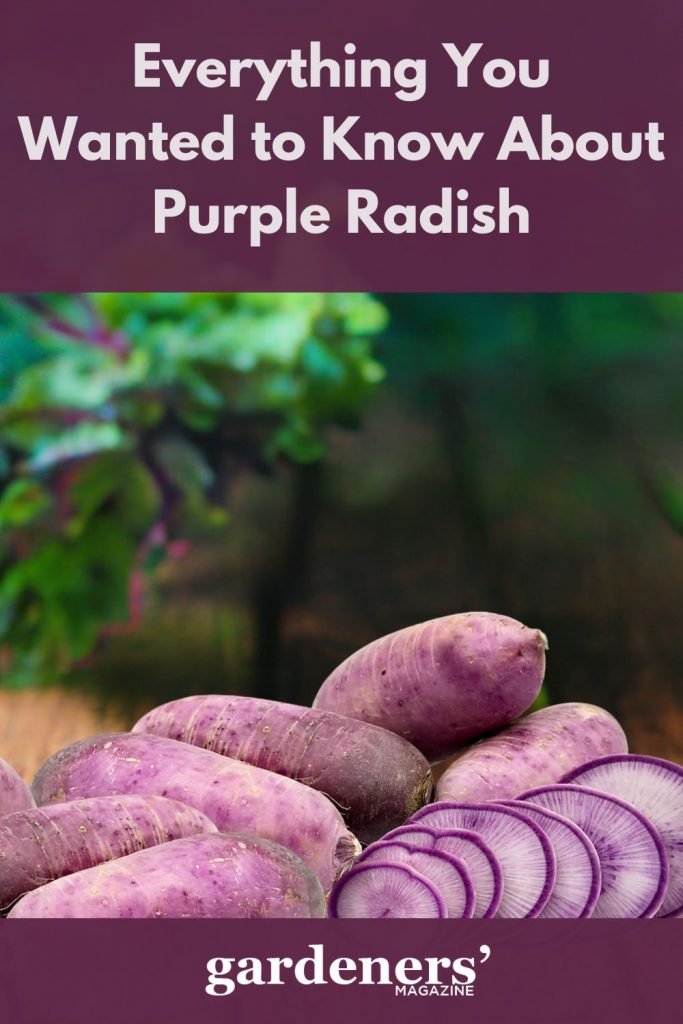Purple radishes are a unique and beautiful root vegetable with an appealing flavor profile that makes them popular among chefs and home cooks alike. They have a long history of cultivation, with origins dating back to ancient Greece. With their striking deep purple hue, they make for an eye-catching addition to any dish. In this article, we will explore the origin, flavor profile, health benefits, seasonality and availability of purple radishes. We will also discuss the best ways to select, store and use them in your own cooking.
History and Origin of Purple Radish
Purple radishes are thought to have originated in ancient Greece, where they were first cultivated as early as 400 BC. They were a popular ingredient among the Greeks of the time, and were often used in salads or cooked dishes. Since then, purple radishes have spread throughout the world, with different varieties being cultivated in many parts of Europe, Asia and North America.

Description of Purple Radish
Purple radishes are a type of root vegetable, similar in appearance to red radishes but with a striking deep purple hue. They are usually round or oval in shape, with a sweet and mildly spicy flavor. They range in size from small to large, depending on the variety.
Flavor Profile of Purple Radish
Purple radishes have a unique flavor profile that can be described as both sweet and slightly spicy. Their flesh is crisp and crunchy, with a mild peppery finish. The taste of purple radishes can be enhanced by adding other vegetables or fruits to a dish, such as apples or carrots.
Health Benefits of Purple Radish
Purple radishes are an excellent source of vitamins and minerals, including Vitamin C, folate, iron and potassium. They also contain antioxidants, which can help protect against certain diseases and illnesses. Eating purple radishes can be beneficial to your health.
Seasonality and Availability Throughout the Year of Purple Radish
Purple radishes are usually available during the spring and summer months, although some varieties can be found in early fall or late winter. They have a short shelf life, so it is best to buy them as close to harvest time as possible. They should be stored in the refrigerator for up to three days.
Cultivation of Purple Radish
Purple radishes can be grown in both traditional and hydroponic gardens. They are fairly easy to cultivate, as they require very little maintenance. The soil should be well-draining and rich in organic matter, while the plants need plenty of sunshine and moderate temperatures. Depending on the variety, it may take anywhere from three to six weeks for purple radishes to mature.
Harvesting of Purple Radish
Purple radishes can be harvested when they reach a size of two inches (5 cm) in diameter. When harvesting, it is important to use sharp tools and avoid damaging the plant’s roots. Once harvested, they should be washed and refrigerated immediately to maintain their freshness.
Where Do Purple Radish Grow? Region-wise
Purple radishes are usually grown in temperate climates, including the Mediterranean region, North America and parts of Asia. They thrive in moist, well-drained soil but can also be cultivated in hydroponic gardens if necessary.
What are the Things to Remember When Buying Them?
When buying purple radishes, it is important to look for ones that are firm and free from blemishes or black spots. They should also have a pleasant aroma and be free of any visible signs of spoilage. If possible, purchase organically grown varieties, as they will be higher in nutrients and free of any chemical residues.
How to Store Purple Radish?
Purple radishes can be stored in the refrigerator for up to three days, though it is best to use them as soon as possible after purchase. To keep them fresh for longer, they can also be blanched, frozen, or pickled.
How Do You Use Purple Radish with Other Fruits and Vegetables?
Purple radishes can be used in a variety of dishes, from salads to soups. They pair well with other root vegetables such as carrots and potatoes, as well as fruits like apples and pears. Additionally, they can also be cooked in stir-fries or roasted for added flavor. When using purple radishes raw, it is important to remove the skin before consuming, as it can be bitter.
Conclusion
Purple radishes are a nutritious and flavorful addition to many dishes. They contain numerous vitamins and minerals, and have a unique earthy flavor that pairs well with other fruits and vegetables. When purchasing them, look for firm specimens free from blemishes and spoilage, and store them properly in the refrigerator to make sure they stay fresh for as long as possible. With proper care, these colorful roots can be enjoyed for many meals to come.
- Everything You Wanted to Know About Red Tamarillos - June 2, 2025
- A Guide to Tulips: Everything You Need to Know & More… - June 2, 2025
- Guanabana: Description, Flavor, Benefits, And Uses - May 27, 2025
